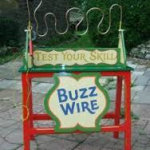As I sat down at the computer to start composing this week’s blog, I did not have an idea what to write about. It is one of those days when the mind is blank – not that it should be, as we have done a fair few things this week, all of them memorable and interesting in their own way.
For example, Sculpture by the Sea was an enjoyable walk over the cliffs in sunny but not too warm weather, followed by a delicious lunch with stunning views over Coogee beach.
Then the Con Choir and Orchestra played a wonderful programme last weekend, including Mozart’s Great C Minor Mass, before which Ryan O’Donnell sang On Wenlock Edge by Vaughan Williams, evoking fond memories of a beautiful part of England which I used to cycle around in my teens.
So, bereft of ideas, I wandered into YouTube, to check out the links of the carols from last week’s blog, and, suddenly, something happened. One of those infuriating adverts came up, interrupting the mental flow. My initial temptation, as always, was to switch it off as soon as possible, but the strains of Wagner’s Ride of the Valkyries were so arresting that I stuck with it. It was delightful!
It is an ad for the 2018 Season of the Sydney Symphony. It is very imaginative, very creative and has a few surprises in store. Click here to watch it – it only lasts just over a minute – less time than it takes to sing Omnes generationes from Bach’s Magnificat. It would be intriguing to see what the panelists on Gruen might make of its appeal to all sorts and conditions of people.
So – many thanks to the SSO for giving me something to write about this week. I do hope you enjoy watching the ad as much as I did.
PS. Quite a number of our members are rehearsing this weekend for a performance of Verdi’s Requiem next weekend at Sydney Town Hall. It is a huge work, extremely demanding but immensely satisfying to sing. Good luck to them and their fellow choristers. If you can, do go to the performance next Sunday afternoon – details on our NoticeBoard page.
